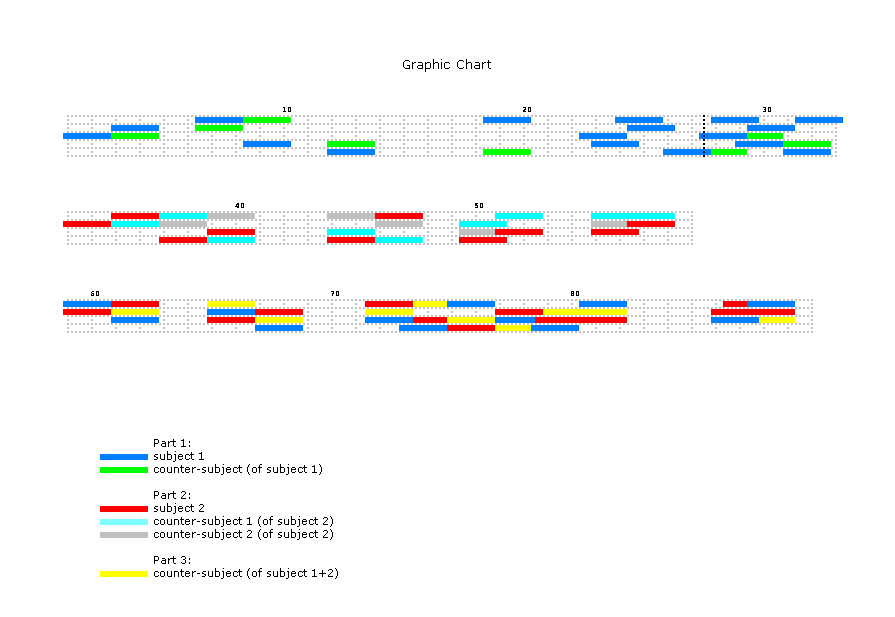
The second movement of the Fantasia and Fugue in C minor (BWV 562), which was composed in 1747-48 (or earlier), survives in a fragmentary state. According to certain views the theme and its countersubject did not possess enough melodic and contrapuntal potentials and therefore Bach abandoned the composition altogether. Others suppose that the movement was originally a double fugue, the last pages of which got lost. For that matter, the characteristic proportions of the surviving section also bear evidence of this fact. The exposition of the fugue theme is already followed from bar 22 onwards by a stretto; a similarly concise solution can be found at the beginning of the Fugue in E flat major (St Anna) (BWV 552:2).
When I started complementing the fragment in 1990, it became evident that the work must originally have been a double fugue. At the same time the piece was a "preliminary study" to an ever greater challenge, the reconstruction of The Art of Fugue. (The article "Reconstruction of the Final Contrapunctus of The Art of Fugue" can be read in English in the International Journal of Musicology, vol. 5, 1996, pp. 25—93; vol. 6, 1997, pp. 103—119.) In the retrospective it seems to me that completing the Fugue in C minor was easier and more difficult at the same time. This fugue allows namely to proceed in several directions whereas the basic scheme of The Art of Fugue is much more determined.
Because the fugue has remained unfinished, the fantasia is performed relatively seldom while the fugue surviving as a torso never, however promising and grandiose it begins.
To become acquainted with this undeservedly forgotten organ fugue you can find hardly any website which is more suitable than the "bachorgan.com".
Zoltán Göncz
Budapest, July 17, 2003
